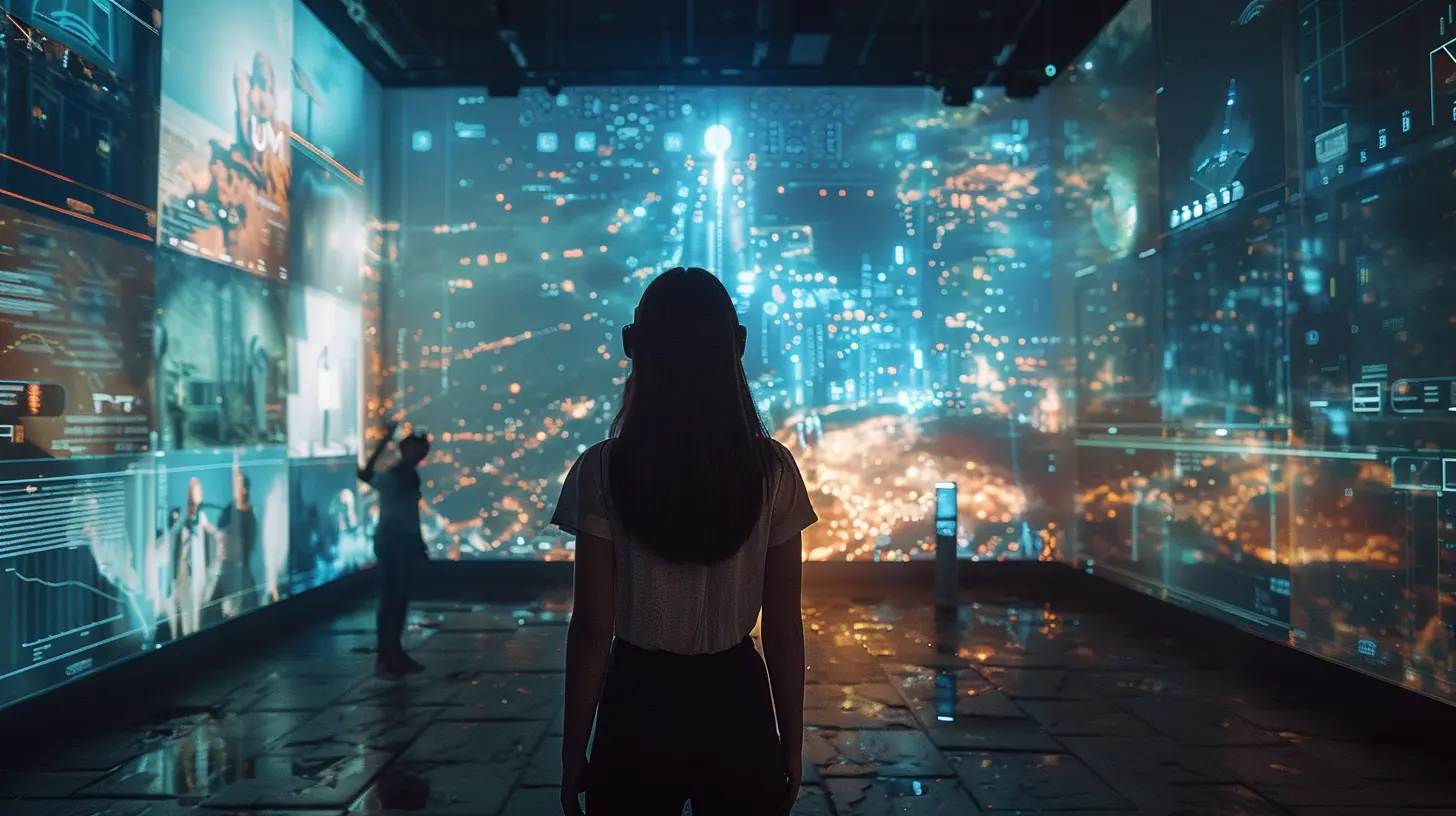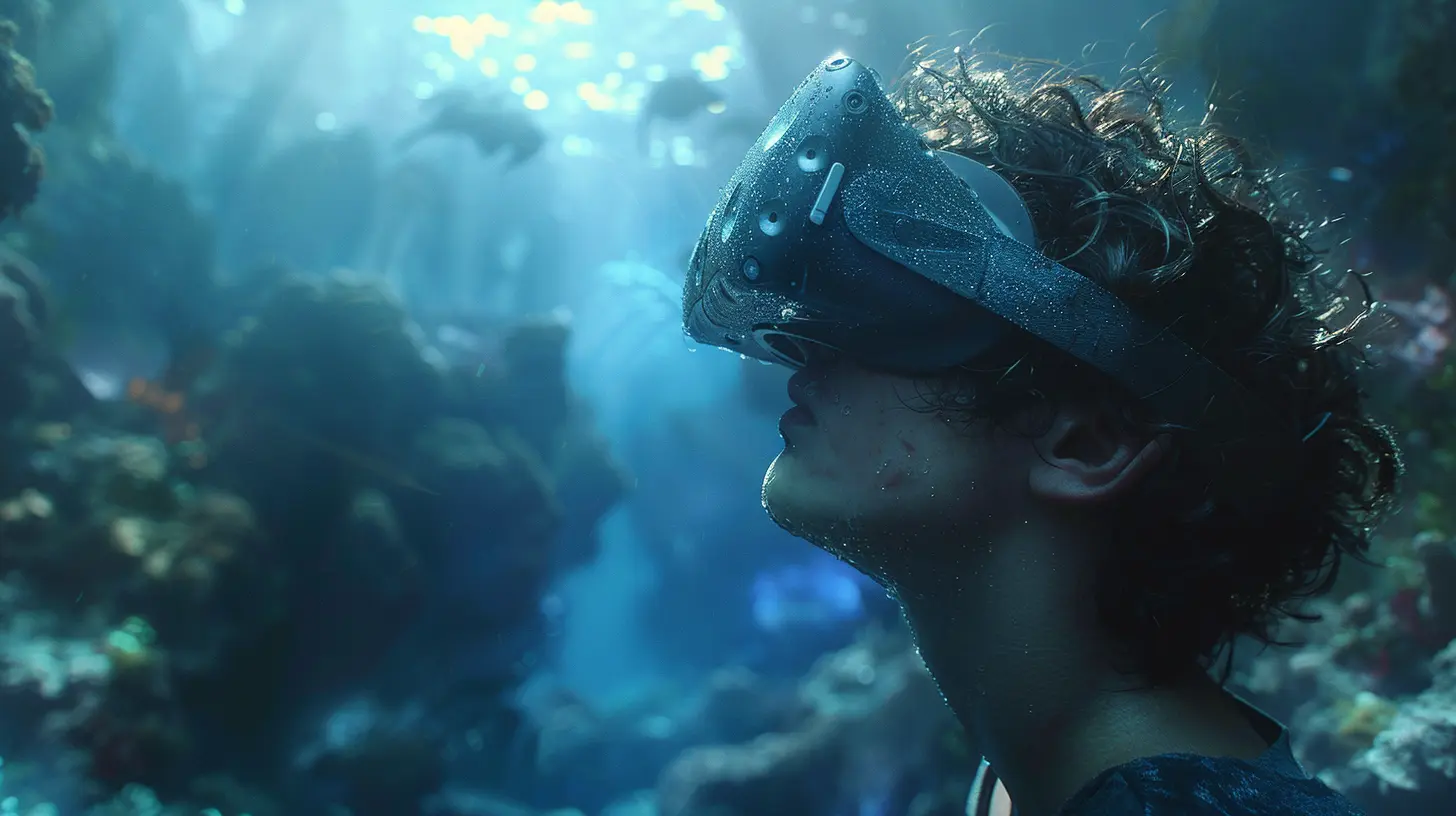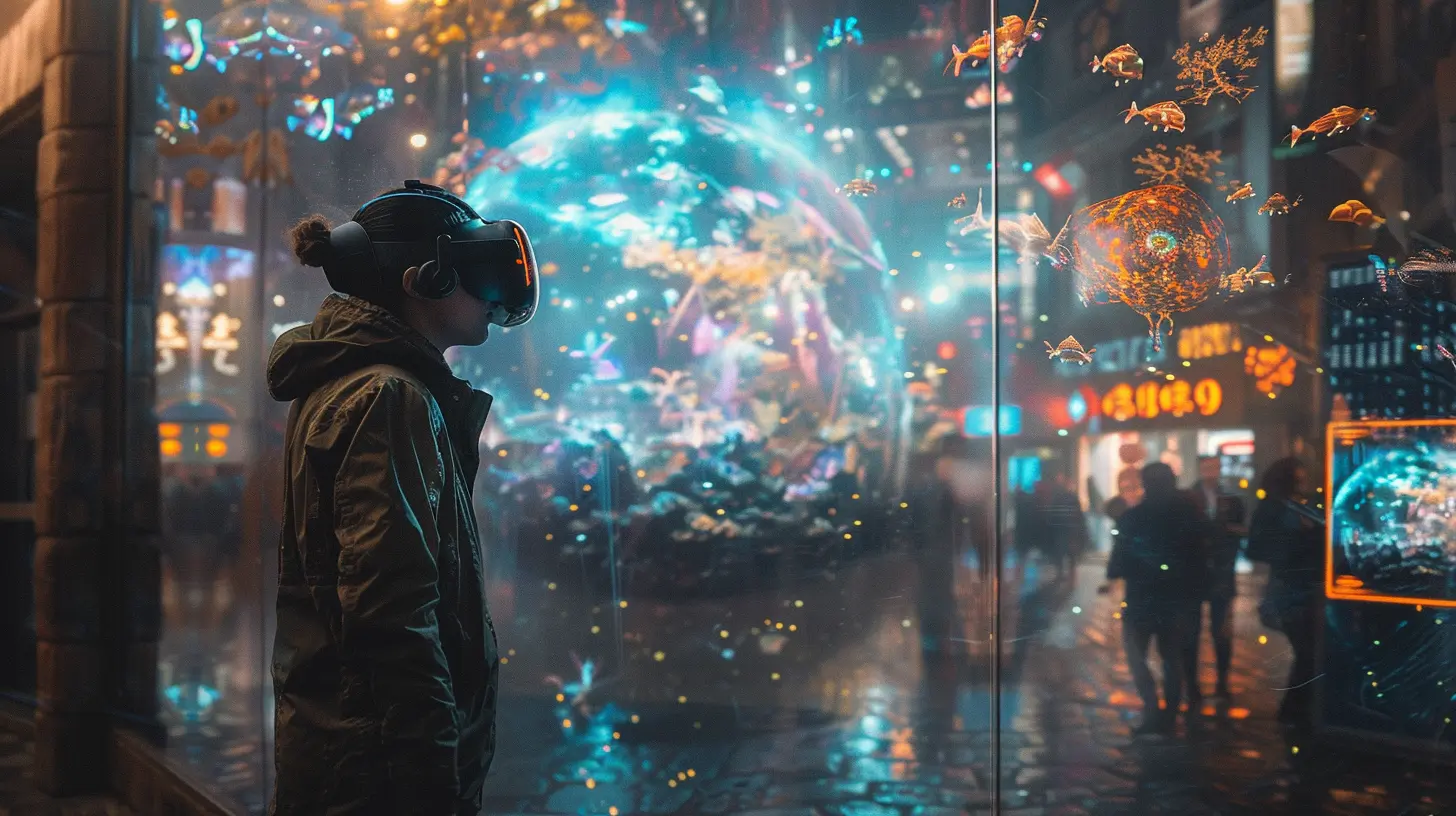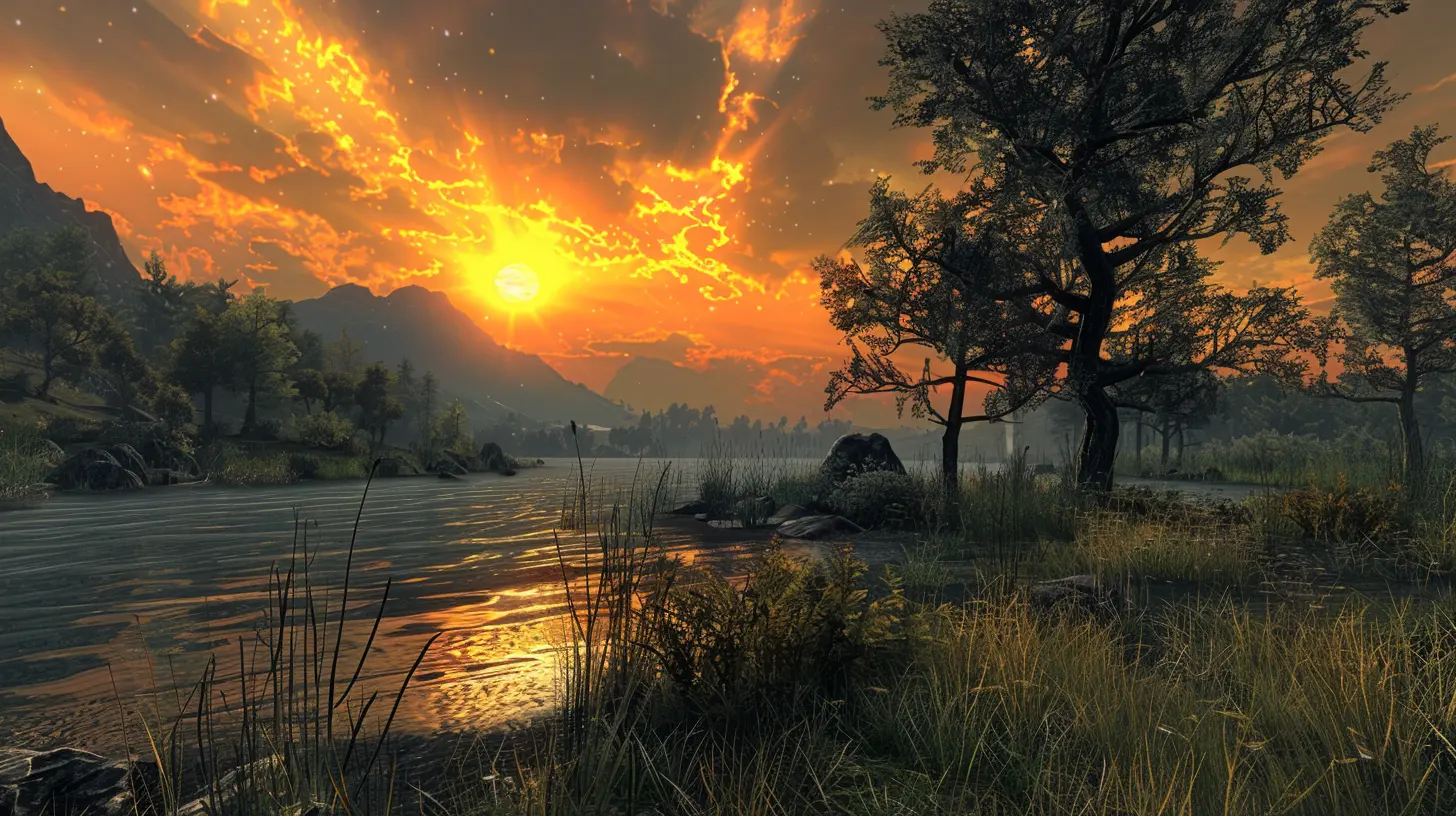When Virtual Worlds Mirror Reality: The Rise of Realistic Gaming
24 September 2025
Let’s face it—gaming isn’t what it used to be. Gone are the 8-bit days of blocky characters and simple jump mechanics. Today’s games? They’re practically parallel universes. It's like the line between what's real and what's virtual is getting blurrier by the second. So, what’s fueling this shift? Why does it feel like we’re stepping into a second life every time we pick up a controller or put on a VR headset?
Let’s break it all down and dig into the rise of realistic gaming—how virtual worlds are starting to look, feel, and act just like the world around us.

Gaming Has Grown Up—A Lot
Back in the day, gaming was mostly about fun little distractions. But now? It’s a full-blown immersive experience. Think lifelike landscapes, believable physics, and characters that show emotion better than some Hollywood actors. Realistic gaming has taken center stage—and it’s captivating players across the globe.We’ve hit a point where you can sit on your couch and walk the streets of 1940s Los Angeles in L.A. Noire, or hunt for food and fight to survive in a forest in The Forest. Heck, with some games, you can even feel like you're part of a war documentary or surviving a zombie apocalypse that looks like it was pulled straight from a movie set.
So, how did we get here?
The Tech Behind the Magic
To understand why games feel so lifelike now, we’ve got to take a peek under the hood. There are a few major players making it all happen—some you’ve probably heard of, and some that quietly do their job in the shadows.1. Hyper-Realistic Graphics Engines
When it comes to visuals, the biggest leap came with advanced graphics engines like Unreal Engine 5 and Unity. These aren't just tools—they're magic wands for developers. With them, creators can sculpt environments so detailed, you can almost feel the breeze rustling through the trees.We're talking photorealistic lighting, shadows that fall just right, and textures that look like they were plucked from real life. From wrinkled skin on a character’s face to the way moonlight reflects off a wet road—these engines are redefining "realism."
2. Motion Capture (Mo-Cap)
Ever notice how some characters move so smoothly that it almost feels creepy—in a good way? That’s thanks to motion capture. Real actors wear suits covered in sensors, and every movement—down to a twitch of the eyebrow—is recorded and translated into the game.This is why a character in a game like The Last of Us can cry, flinch, or smile in a way that hits you right in the feels. Yeah, it’s digital, but the emotion? That’s 100% real.
3. AI and Behavioral Realism
Graphics aren’t the only thing getting smarter—so are NPCs (non-player characters). Today’s AI programming lets them react more realistically. Instead of bumping into a wall on repeat, they now have routines, emotions, and some even learn based on your behavior.Games like Red Dead Redemption 2 showcase NPCs that go about their day, chat with each other, and notice your actions in surprisingly human ways. It’s like the world doesn’t revolve around you—and that makes it feel way more real.
4. Haptic Feedback and Immersive Audio
Let’s not forget the senses. Modern controllers come packed with haptic feedback tech that lets you feel every footstep or explosion. And audio? Thanks to 3D spatial sound design, you can hear where every whisper, gunshot, or footstep comes from—immersing you deeper than ever.
Realism Goes Beyond Just Looks
It’s not just about how games look—it’s about how they feel. Realistic gaming also means more grounded stories, believable character arcs, and gameplay that mirrors human experience.Emotional Depth and Storytelling
Narrative in games has matured dramatically. Games like Detroit: Become Human and Life is Strange don’t just focus on skill or action—they make you think, question your morals, and emotionally invest in the characters. It’s storytelling at its peak, and it wouldn’t work without the realism baked into every scene.Physics and Mechanics
Realistic gravity, object interaction, vehicle handling—these things matter more than you’d think. Whether it’s the bullet drop in a sniper rifle or how a car skids on wet pavement in Forza Horizon, physics makes or breaks immersion.Real-World Settings
Games are borrowing more and more from real-world locations and cultures. Think of Assassin's Creed where you can stroll through ancient Greece or Renaissance Italy. These experiences feel like time machines with controllers. The attention to detail? Mind-blowing.
Why We Crave Realism in Games
So, here’s the million-dollar question: why do we want games to feel this real?Escapism That Feels Tangible
We play games to escape, sure—but the more convincing the escape, the better. Realistic games don’t just distract us—they transport us. And when virtual worlds feel almost real, the emotions, the triumphs, and even the losses hit harder.Power of Empathy
Ever played a game and genuinely felt bad for making a bad moral choice? That's the magic of realism. When characters feel human and narratives echo our own struggles, we emotionally engage in profound ways.A New Kind of Social Connection
With online multiplayer experiences like GTA Online or VRChat, realistic worlds let us socialize and collaborate in ways that feel eerily close to real life. Especially during global lockdowns, these games became a lifeline for many to stay connected.Virtual Reality: The Final Frontier
We can't talk realism without diving into VR. Virtual reality takes that feeling of immersion and cranks it up to eleven. When you put on a VR headset, you're not just playing a game—you’re inside it.Full-Body Immersion
From turning your head to ducking behind cover, every motion is mirrored in-game. Add in hand tracking and even treadmills for movement, and suddenly your living room becomes a battlefield or a mountain trail.VR’s Real-Life Applications
Beyond fun, VR gaming overlaps with training simulations—for pilots, doctors, and even soldiers. When virtual worlds become this real, they serve as detailed learning tools too.The Challenges of Hyper-Realism
Of course, it’s not all sunshine and pixel-perfect rainbows. There are hurdles to realistic gaming.High System Demands
More realism means more power. Not everyone can afford a $3000 gaming rig or a next-gen console. This hardware gap leaves many players behind.The Uncanny Valley
When games get too real, they sometimes dip into the "uncanny valley"—that creepy zone where something looks almost human but not quite. It can be unsettling and pull players out of the experience.Ethical Dilemmas
As games mimic real life, they also start raising tough questions. Should war scenarios be gamified? How do we handle violence when it looks so real? These are debates we’re only beginning to have.The Future: Where Do We Go From Here?
Realistic gaming is still evolving, and the future looks wild.Neural Interfaces and Brain-Computer Tech
Companies like Neuralink are working on tech that could let us control games with our thoughts. Imagine moving your character or casting a spell just by thinking about it. That’s beyond next-level.Photogrammetry and Real World Scans
Some developers are already using drones and photo data to scan real environments into games. So your neighborhood could become the next map in a game—literally.Smarter AI Companions
Future games will likely feature digital companions that learn your preferences, evolve with you, and might even remember things across sessions. Kinda like a virtual buddy that grows up with you.Final Thoughts
Realistic gaming isn’t just a trend—it’s a paradigm shift. Games have evolved from pixelated time-wasters to emotionally rich, visually stunning, and eerily lifelike experiences. We crave immersion, connection, and authenticity—and today’s games deliver all that with jaw-dropping precision.As technology continues to break boundaries, we’re stepping closer to a future where virtual worlds aren’t just mirrors of reality—they're extensions of it. And honestly? That’s both exciting and a little bit mind-blowing.
So, next time you boot up a game and find yourself lost in another world, take a second to appreciate the magic. Because in many ways, these digital realms are starting to feel just as real as the one we live in.
all images in this post were generated using AI tools
Category:
Realism In GamesAuthor:

Greyson McVeigh
Discussion
rate this article
1 comments
Nyari Gibson
This article brilliantly highlights the fascinating intersection of gaming and reality. As virtual worlds evolve, they offer us not just escapism but also a deeper understanding of ourselves and society. Exciting times ahead for gamers and creators alike!
October 18, 2025 at 4:54 AM

Greyson McVeigh
Thank you! I'm glad you enjoyed the article and share the excitement about the potential of gaming to reflect and deepen our understanding of reality.


